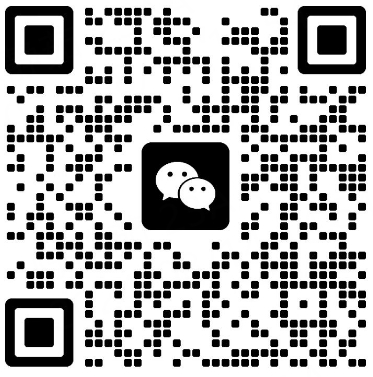- WJCI
- 卓越期刊
- JST
- 北大核心
- CSCD
- 曾用刊名: 工程(英文版)
- 主办单位: 中国工程院战略咨询中心;高等教育出版社有限公司
- 出版周期: 双月
- ISSN: 1009-1742
- CN: 11-4421/G3
- 出版地: 北京市
- 语种: 中文;
- 开本: 大16开
- 邮发代号: 80-744
- 创刊时间: 1999
- 专辑名称: 工程科技II
- 专题名称: 综合科技B类综合
- 该刊被以下数据库收录:
- JST 日本科学技术振兴机构数据库(日)(2022)
- CSCD 中国科学引文数据库来源期刊(2023-2024年度)
- WJCI 科技期刊世界影响力指数报告(2023)来源期刊
- 北京大学《中文核心期刊要目总览》来源期刊:
- 2011年版,2014年版,2017年版,2020年版
- 期刊荣誉:
- 中国科技期刊卓越行动计划入选项目;

提示:
1、投稿方式:在线投稿。
2、刊内网址:http://www.engineering.org.cn
http://www.journals.elsevier.com/engineering
3、刊内邮箱:engineering@cae.cn
4、刊内电话:010-59300284
(更多联系方式请查看期刊官网信息)
5、出刊日期:月刊,一年出版十二期。
2021年3月3日星期三
《工程(英文)》投稿指南
【官网信息】
Guidelines for Authors
General Information
Engineering (ISSN: 2095-8099) is an international open-access journal supervised by the Chinese Academy of Engineering; administered by Center for Strategic Studies, CAE, China, and Higher Education Press, China; published by Engineering Science Press, China; and internationally cooperated with Elsevier. The journal is published monthly in English and the online version is published once a new article is peer-reviewed and accepted. The full text of the English articles should be translated into Chinese after they are officially published, which is convenient for Chinese readers.
Engineering covers the following categories: News & Highlights, Views & Comments, Research. Research focuses on creative, breakthrough, and leading research in the field of engineering. More details about article categories are listed below. Each article submitted to Engineering will be reviewed by at least three reviewers of relevant research fields. The whole peer-review process takes about 12 weeks.
Call for Papers
Article Categories
Research Column
Research Articles commonly fall into one of five main categories: a) Reviews; b) Perspective; c) Article; d) Letter; e) Protocols.
a) Reviews
Reviews can be an authoritative overview of a field, a comprehensive literature reviews, or tutorial-style reference materials. They should describe and synthesize recent developments of interdisciplinary significance, outline the important unresolved questions, and highlight future directions. Reviews can up to ~10000 words, including 3~5 keywords, an abstract, an introduction, main body, brief subheadings, an outlook, figures or tables, and references. Reviews are usually invited by the editor, but a topic may be proposed by an author via the editorial office.
Feature Articles (up to ~6000 words) are reviews written by leading scientists within their field and mainly summarize his/her group’s recent work from a personal perspective. They cover many exciting and innovative fields and are of general interest to all researchers in the field.
Recent Patents (up to ~6000 words) should review the most recent and important patents based on the topic covered, including the important details and significance of reported patents.
b) Perspectives
Perspectives (up to ~3000 words) are brief, accessible pieces covering a wide variety of timely topics with some research details. They should highlight recent exciting research and provide new insights.
c) Articles
Full Length Articles (up to ~6000 words, including 3~5 keywords, an abstract, an introduction, main body, brief subheadings, a conclusion, figures or tables, and references.) are original, unpublished primary research. They are expected to discuss hot topics, areas of interest, challenges, and prospects in engineering science and technology (EST) development, and present a major and cutting-edge advance. We encourage engineering breakthroughs and innovations that are of profound economic and social importance, which can arouse widespread concern and follow-up in EST. The papers lay emphasis on the calculation or experiment process are not suitable for Engineering. Extensions of work that has been published previously in short form such as a Letters/Communications are usually acceptable. Additional supplementary materials are encouraged, which can be various types of auxiliary information, including figures and tables, detailed materials and methods, video or audio files, and so on.
d) Letters
Letters (up to ~4000 words) must contain original and highly significant work whose high novelty warrants rapid publication. They should present important new research results of broad significance.
e) Protocols
Protocols aim to publish the protocols being used to answer important research questions. The protocols must have been used to acquire data reported in published papers. Protocols are presented in a “recipe” style providing step-by-step descriptions of procedures in details.
Feature Columns
a) News & Highlights
News & Highlights (600~1500 words) column publishes timely news about the high-profile global engineering/technology issues, with a view to facilitating sci-tech dissemination and information exchange. This column covers major technical breakthroughs in the field of engineering technology, major policy-making, project implementation, and economic developments in engineering technology, or latest developments in other major issues of shared concern among sci-tech, engineering, and the wider communities.
b) Views & Comments
Views & Comments (1000~2000 words) are expected to provide views of the overall role on the EST development, advices of instructive significance for the resolution of grand challenging problems, new ideas of great importance on promoting inter-disciplinary research, or unique thoughts on some major issues of common concern to the science and engineering community and society. All submissions (including invited), requiring clear and specific views without empty comments, will go through a standard peer-review process. Due to the limited volume of the column, the specific point of view that is appropriate to be published in some professional journals won’t be acceptable here.
c) Engineering Achievements
Engineering Achievements (4000~5000 words) publishes major achievements of EST, aims to attract the attention of EST experts and students with the shocking cutting-edge and communicate the value of EST to the public with better understanding. Engineering Achievements are defined as—major engineering projects and industrial plant/equipment, new critical instruments, EST breakthroughs, production models breakthroughs, and etc. It is required that the scientific and engineering support technology or equipment is complete, and the main project has been completed in the past five years. A 3-5 min Video and other supplementary materials are highly recommended. They should be easy-understanding, concise, and eye-catching.
……
- 地址:北京市朝阳区惠新东街4号富盛大厦12层《工程(英文)》编辑部
- 邮编:100029
- 电话:010-59300284
- 微信公众号:
- 官网邮箱:engineering@cae.cn
- 网址:http://www.engineering.org.cn
-
公众号

-
反馈
-
期刊点评
-
联系客服



